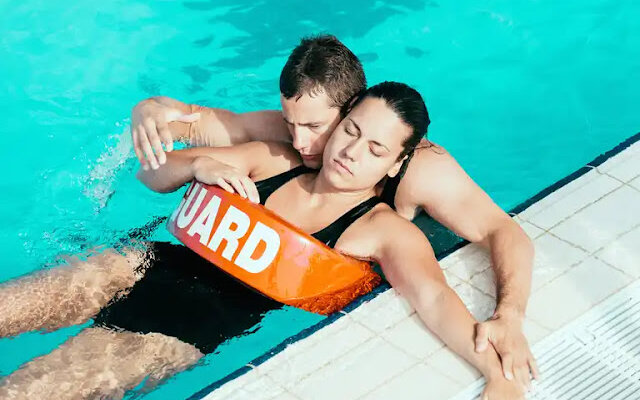Becoming a certified lifeguard is more than just an accomplishment; it’s a responsibility and a gateway to a career where you can make a difference. Lifeguard certification equips individuals with critical lifesaving skills, preparing them to respond effectively to emergencies in aquatic environments. Whether you’re considering it as a summer job or a stepping stone to a career in public safety, obtaining your lifeguard certification is a valuable and fulfilling endeavor.
This comprehensive guide delves into the requirements, benefits, and process of getting certified, with a special focus on the best lifeguard certification programs, including those offered by the American Lifeguard Association (ALA).
Why Lifeguard Certification Matters
Lifeguards play a crucial role in maintaining safety at pools, beaches, and water parks. However, being an effective lifeguard requires more than a watchful eye. It demands proficiency in lifesaving techniques, strong swimming skills, and the ability to stay calm under pressure. Certification ensures that lifeguards have undergone rigorous training and testing to meet these standards.
Key Reasons to Get Certified
- Life-Saving Skills: Learn CPR, first aid, and water rescue techniques that could save lives.
- Professional Development: Certification opens doors to rewarding job opportunities.
- Legal Compliance: Many states and organizations require certification for employment as a lifeguard.
- Personal Growth: Boost your confidence and responsibility while serving your community.
The Lifeguard Certification Process
Eligibility Requirements
Before enrolling in a lifeguard certification course, candidates must meet certain prerequisites:
- Age: Most programs require participants to be at least 15 years old.
- Swimming Skills: Proficiency in swimming is a must, including a timed swim test and retrieving objects from the bottom of a pool.
Training Components
Lifeguard certification courses are comprehensive, covering various essential areas:
- CPR and AED Training
Learn how to perform cardiopulmonary resuscitation (CPR) and use automated external defibrillators (AED) to handle cardiac emergencies effectively. - First Aid Skills
Gain knowledge in treating injuries, from minor cuts to severe fractures, ensuring immediate care until professional help arrives. - Water Rescue Techniques
Master techniques for saving drowning individuals, including active and passive rescues. - Emergency Scenarios
Participate in simulations to prepare for real-life emergencies, honing your ability to respond quickly and appropriately.
Duration and Costs
Most lifeguard certification programs span 20-30 hours, divided over a few days or weeks. Costs can range from $200 to $400, depending on the training provider and location.
The Best Lifeguard Certification Programs
When it comes to choosing a certification program, the American Lifeguard Association (ALA) stands out as a top choice. Known for its high standards and comprehensive training, ALA has become a trusted name in the industry.
Why Choose the American Lifeguard Association?
- Comprehensive Training
ALA’s programs cover all essential areas, including water safety, CPR, AED, and first aid. - Flexible Options
ALA offers both in-person and blended learning programs, allowing participants to complete theoretical modules online and practical skills in person. - Nationwide Recognition
ALA certifications are widely recognized, making it easier to secure employment at pools, water parks, and beaches across the United States. - Experienced Instructors
ALA’s trainers are highly experienced and focus on hands-on practice to ensure participants gain real-world skills. - Lifeguard Recertification
ALA provides straightforward options for renewing certifications, ensuring lifeguards remain updated on the latest safety protocols.
Lifeguard Career Opportunities
With a lifeguard certification, you can explore diverse job opportunities, such as:
- Public Pools and Water Parks: Be part of a team ensuring the safety of families and swimmers.
- Beaches: Protect swimmers in natural water bodies while enjoying breathtaking views.
- Recreational Facilities: Work in community centers, fitness clubs, or resorts.
- Lifeguard Instructor: Advance your career by training the next generation of lifeguards.
Certified lifeguards also develop skills that are valuable beyond the job, including leadership, problem-solving, and effective communication.
Maintaining Your Certification
Lifeguard certification is typically valid for two years. To ensure you stay certified, it’s crucial to renew your credentials through recertification courses. Programs like those offered by ALA provide convenient options for lifeguards to stay up-to-date on the latest safety techniques and standards.
Tips for Aspiring Lifeguards
- Practice Your Swimming Skills: Join a local swim club or take swimming lessons to meet proficiency standards.
- Stay Fit: Lifeguarding requires physical stamina, so maintain a regular fitness routine.
- Choose a Reputable Program: Enroll in a program like ALA’s to ensure quality training and recognized certification.
- Prepare for Emergencies: Familiarize yourself with common water safety challenges and how to address them.
Conclusion
Becoming a certified lifeguard is more than just a job; it’s a commitment to ensuring the safety and well-being of others. By obtaining your certification through a trusted organization like the American Lifeguard Association (ALA), you gain not only the skills and knowledge needed to save lives but also access to a world of rewarding opportunities.
Whether you’re looking to start a new career, develop essential life skills, or make a meaningful impact in your community, lifeguard certification is your first step. Begin your journey today and take pride in knowing you’re prepared to safeguard lives in any aquatic environment.



